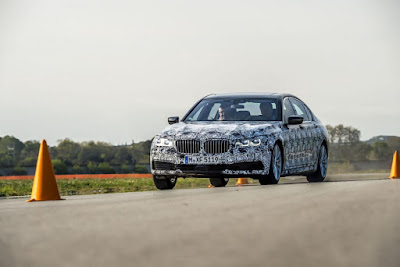BMW has announced that the compact 3 Series is getting a handful of significant updates for the 2016 model year.
One of the most important modifications is the addition of a brand new turbocharged all-aluminum 3.0-liter straight-six engine called B58 internally. The six-cylinder produces 320 horsepower between 5,500 and 6,500 rpm and 330 foot-pounds of torque starting at just 1,380 rpm.
Called 340i, the new range-topping 3er comes standard with an eight-speed Steptronic automatic transmission, but an enthusiast-friendly six-speed manual gearbox with a rev-matching function is available as a no-cost option. The automatic 340i sprints from zero to 60 mph in 4.8 seconds when it is ordered with rear-wheel drive, and it performs the same task in 4.6 seconds when purchased with BMW’s optional xDrive all-wheel drive system.
Confirming a long-standing rumor, BMW has announced plans to launch the first-ever plug-in hybrid 3 Series next year. Called 330e, the sedan will be powered by a fuel-sipping hybrid drivetrain made up of a small turbocharged four-cylinder gasoline-burning engine and a compact electric motor built into a model-specific eight-speed automatic transmission. Together, the two power sources will generate about 250 horsepower and 310 foot-pounds of torque, enough to send the gas-electric 3 from zero to 60 mph in 6.1 seconds. Alternatively, the motor will be able to power the 3 by itself for up to 22 miles.
The 3 Series Sports Wagon benefits from a revised suspension setup, an updated Dynamic Stability Control system and a redesigned electric power steering system. BMW promises the updates noticeably improve the wagon’s handling and feedback under all load conditions.
Buyers planning on taking their 3 to the track can order the Track Handling Package. Not available on the diesel-burning 328d, the package bundles BMW’s Variable Sport Steering system, an Adaptive M suspension, M Sport brakes with blue calipers and high-temperature Euro brake pads as well as 18-inch alloys wrapped in Michelin Super Sport Tires.
The 3 Series alone accounts for 25 percent of BMW’s global sales so the Munich-based automaker is very careful when it updates it. Accordingly, the visual modifications for 2016 are discreet and largely limited to new bumpers on both ends, new exhaust tips, new halogen headlights, and full LED tail lamps. Most models can be ordered with an Adaptive Full LED Headlights with Automatic High-beam System, a first in the nameplate’s history, while the expected assortment of new alloy wheel designs and paint colors round out the updates.
The interior is spruced up with high-gloss black trim on the center console, new ambient lighting, cup-holder covers and chrome accents all around. An additional storage bin located next to the cup holders allows the passengers to store small items.
The 2016 BMW 3 Series will go on sale across the nation in the next few weeks, while the plug-in hybrid 330e is not expected to land in showrooms for another year or so.










































